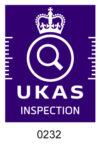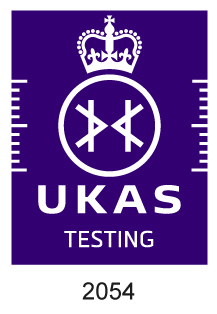Menu
close
**LATEST** New quantitative face fit services for RPE
Book in today

Every year, the Health and Safety Executive (HSE) publishes a report on the impact of occupational lung diseases, including mesothelioma and other asbestos-related diseases (ARDs).
It’s an important document that helps us understand the severity of the health and safety risks that asbestos can present – however, it isn’t comprehensive.
Just like in your workplace or on a worksite, you can only protect people and stay compliant when you have a full picture of the risks.
This blog will discuss the learnings we can take from the official HSE statistics about occupational lung diseases, highlight some of the gaps, and explain what duty holders can do to stay ahead of the evolving asbestos risk.
Read More
In simple terms, this report gives the most important information about deaths and diseases related to asbestos exposure in the last year. The headlines are as follows:
Moreover, the report states that the figure for yearly deaths attributable to asbestos has peaked and is gradually declining.
As we have stated, this isn’t the full picture, and by the HSE’s own admission, there are some exclusions to the reporting.
In order to understand (and respond to) the true risks of occupational asbestos exposure, we need to add vital context. The key takeaways below are a simple way of framing it.
1) WE ARE UNDERESTIMATING THE RISK OF ASBESTOS EXPOSURE
In this report, the mortality statistics exclude a number of key groups, including:
This is problematic as:
Lastly, asbestos exposure, in combination with smoking, can increase the risk of developing an ARD by 50 to 80% – but the death may only be recorded as one from smoking.
With all of this in mind, the number of deaths caused by exposure is likely to be significantly higher than stated in this report. Mesothelioma UK suggests that teachers and doctors alone are losing their lives in 6 to 7 times greater numbers than stated by HSE.
2) THE PROFILE OF THOSE AT RISK IS CHANGING
Awareness campaigning by HSE has historically focused on preventing the risks of asbestos in trades. After all, the majority of fatalities from asbestos have been (and continue to be) among former tradesmen.
However, women in non-trades roles are also increasingly prevalent in these statistics.
HSE has reported an approximate average of over 400 mesothelioma deaths per year for women, and 1,800 for men in recent years. That being said, whilst male deaths are trending downwards, the number of female victims will likely remain consistent throughout the 2020s.
We have already mentioned that ARDs among teachers, nurses and administrative staff (historically female-majority professions) are being underreported.
However, the key context is that asbestos is estimated to remain in over 80% of hospitals and 94% of schools in England.
Simply put, while the risk for tradespeople may indeed be less than it once was, the new risk of ‘occupational exposure’ in schools and hospitals is far more widespread and damaging than given credit for – and one that duty holders need to be alert to.
3) HEALTH MATTERS AS MUCH AS SAFETY
We already know that over 5,000 people lose their lives to diseases caused by historic asbestos exposure every year.
By comparison, 135 people lost their lives last year to safety-related accidents(such as falls or machine-related incidents).
It’s a stark difference, but the key learning is that far more people are dying from chronic illnesses (ones that take years to develop) than immediate accidents.
For both duty holders and tradespeople, the need to recognise the risks of asbestos and a plan to implement appropriate controls (e.g. air monitoring, awareness training or site surveying) should be as much of a priority as protecting people from other immediate worksite risks.
4) THE COSTS OF PREVENTING ASBESTOS EXPOSURE ARE SIGNIFICANTLY LOWER THAN DEALING WITH ITS AFTER-EFFECTS
Mesothelioma UK’s report, ‘Clearing the Air’, which provides valuable context to several findings in the HSE report, is also a cost-benefit analysis for asbestos removal in the public sector.
It estimates that caring for those with ARDs has cost the UK economy and society just over £1.3b in 2023 alone. However, the report also explains how a plan to remove asbestos from all public buildings in 10 years could produce an overall saving of £3.6b in public finances over the next 50 years.
This is simply because the costs of managing (and, in this example, removing) asbestos are always lower than providing care to treat ARDs on the NHS or paying settlements after fatalities.
For a duty holder, this fact remains the same. If you manage asbestos safely and in compliance with guidelines, protecting people and planning remedial work in your buildings is far more economical than not doing so.
Of course, all this information points to the fact that there are issues that are bigger than one duty holder’s ability to manage – there will be a degree of political will needed to make sure legislation is comprehensive and enforceable.
However, if you are a duty holder who sees this information and has concerns about the safety of your people, don’t be overwhelmed.
There are often simple steps that will keep you compliant and safe, as well as the support to do so at scale. This can be as simple as requesting an audit of your asbestos management plan, or even organising awareness training for your general staff.
The right support makes these control measures easy to follow, and by seeking it early in the lifecycle of a project, you can ensure that people are safe, your procedures are compliant, and that your projects remain on track.
If you have any questions at all, or simply need advice to manage asbestos in your buildings, don’t hesitate to call us at 0203 384 6175 or visit aec.uk to learn more.

